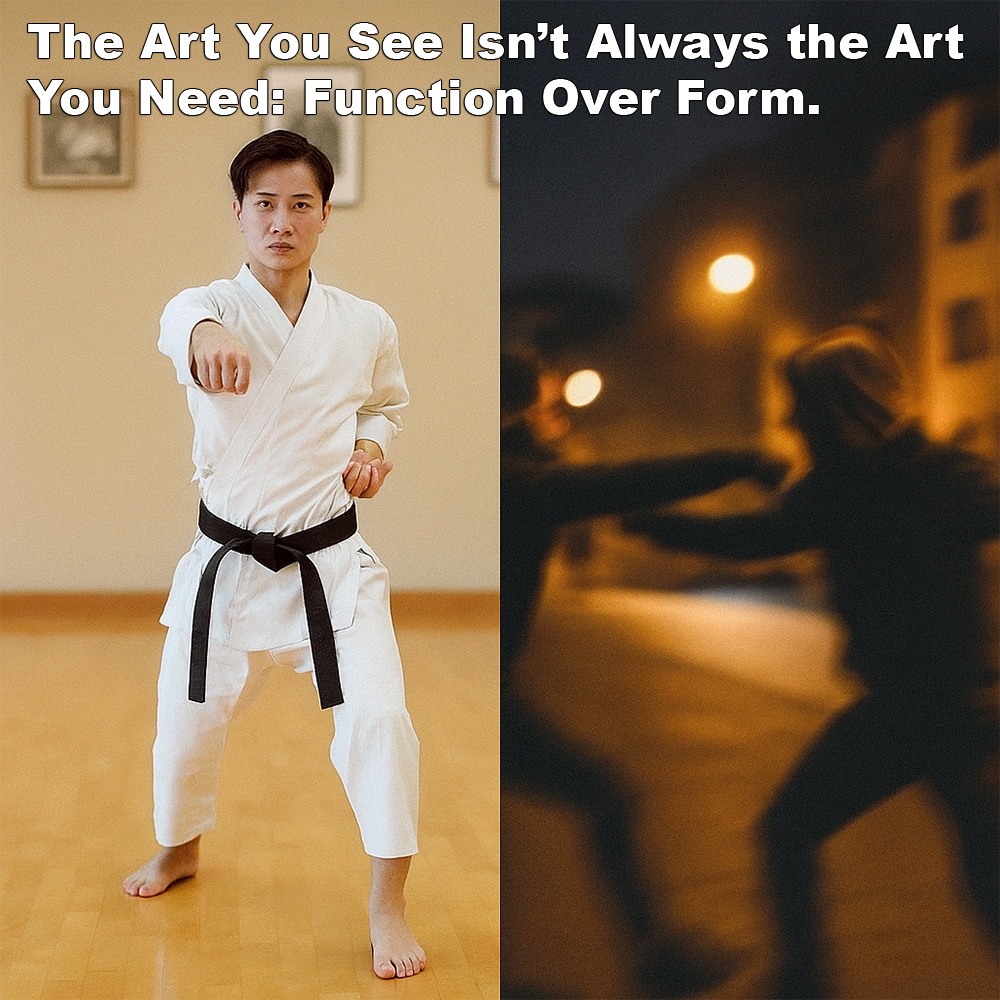
(Approx 2 minute 50 second read)
I was watching a video recently of bunkai performed at a tournament in Japan.
.
It was the usual two against one format. The individuals performing the applications were incredibly athletic, the choreography was really impressive, their techniques crisp, the timing and techniques impeccable.
.
It was really fun to watch.
.
Many modern karate-do practitioners strive to improve their form. Whether to win a tournament, or be promoted. Good form is the goal.
.
It’s aesthetically pleasing, and as I noted above, great to watch.
.
Striving for good form requires constant effort – strict attention to what your body is doing and constant adjustment. It requires mental focus and concentration. It requires dedication, perseverance, and endurance.
.
It’s the primary focus of every karate class. Good form is the goal, not functionality.
.
Why do I write about context so much? Because to start with, good form does not equal good function. Many try to argue that it does. But even if you consider sparring, that argument falls short, where you make concessions to score a point. And it really falls short in a non-consensual real-world fight.
.
There are no inch-perfect techniques. People grab, shove, spit, bite, head-butt, and poke at your eyes. It’s frantic, messy, and often over before you even realize it has begun. Nothing about it resembles the neat timing and distance you see in the dojo. If your training never considers that chaos, then good form alone won’t carry you through it.
.
If your context in training is self-defense, then survival and effectiveness are required. In a fight to get home safely, there is no second-place winner, regardless of how good your form is.
.
The “good form” of modern karate works great in organized tournaments but not so great in the real world. Of course there are those talented individuals, the select few, who can make anything work anywhere. But I am talking about the everyday practitioner, the one who trains a couple of times a week.
.
To think that you will somehow perform differently than you’ve trained when the chips are down is contrary to all established research.
.
Modern karate is an art form, and good form is at the heart of the physical performance – just as in gymnastics.
.
A worthy goal, if indeed that is your goal.
.
However, you do need to keep in mind that your art probably isn’t the most effective tool in a fight with no rules and no judges to consider your actions.
.
Although originally based upon fighting methods, the art you now practice is focused on how it looks, and not on the function.
.
Yet, the effective fighting methods are still available to us in the kata should we decide to pursue that study.
.
What’s required in a real-world situation is to be able to use the appropriate action instantly at the moment of truth. It must be spontaneous, unconscious, effective, and even violent. If even the slightest fleeting thought is given to “correct form” all may be lost. It must be delivered from whatever position you’re in, to whatever direction is required, with speed and power, and be intuitive.
.
To be able to investigate what the kata have to tell us requires a different mindset, not the “form” mindset that you are used to. You have to understand the realities of non-consensual violence. You have to learn how to interpret what is effective in a real fight.
.
That knowledge is necessary to enable you to investigate and to understand and extract the methods contained in kata.
.
Those methods show us general ideas and principles. The idea is for us to analyze those concepts, which may change for each encounter, adapting to the need at the time.
.
In the modern dojo where karate-do is learned and practiced, “good form” is paramount. But in pragmatic and practical karate, you need to focus first on what actually works, not on how it looks.
.
Function over form. It’s non-negotiable.
.
.
Written by Adam Carter – Shuri Dojo
